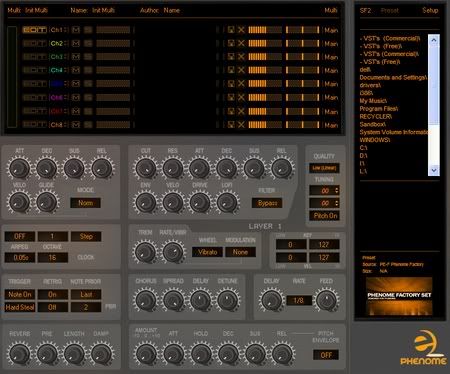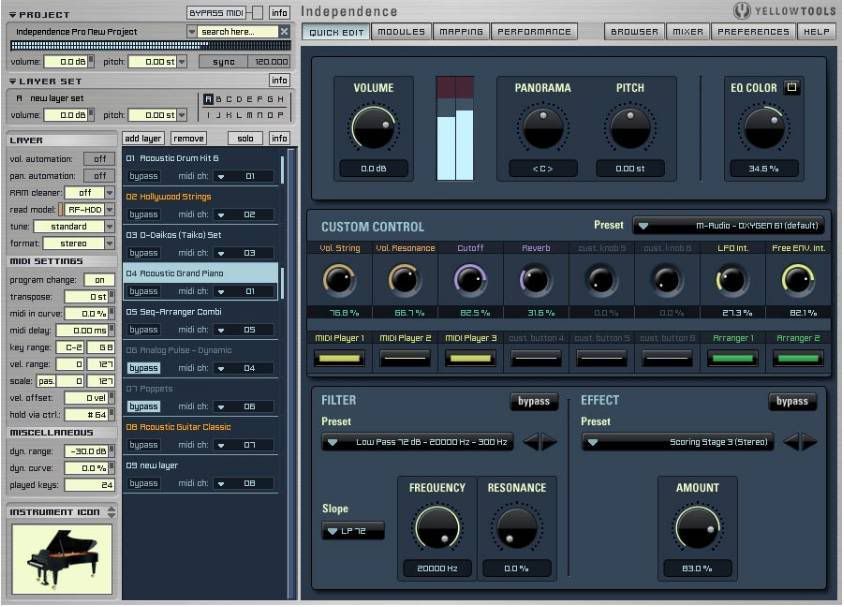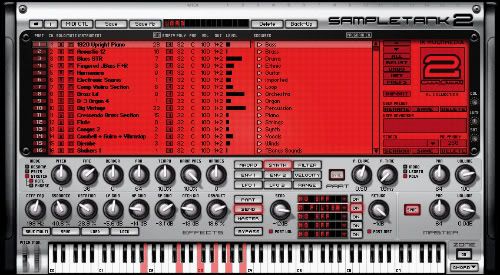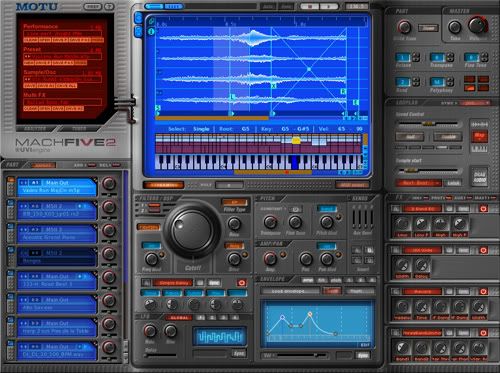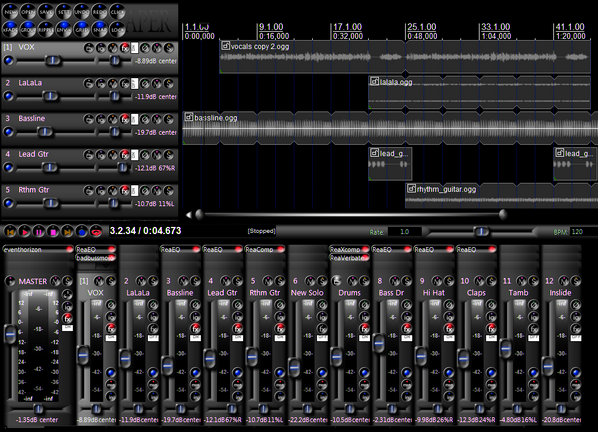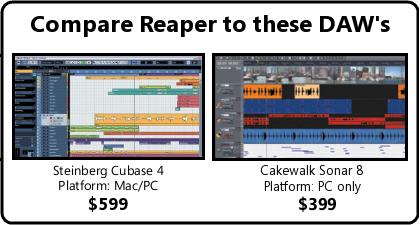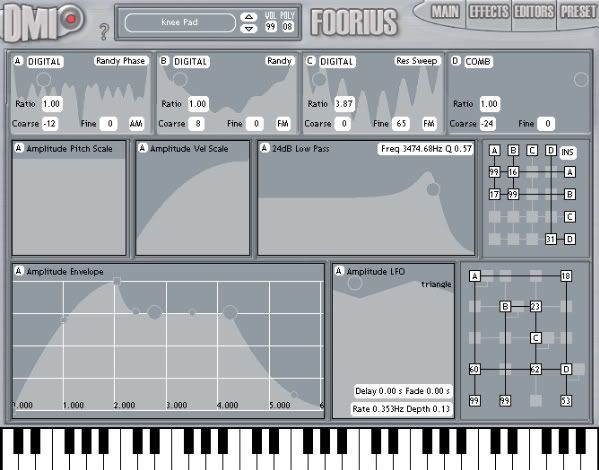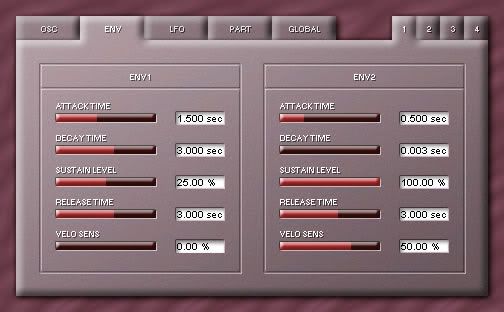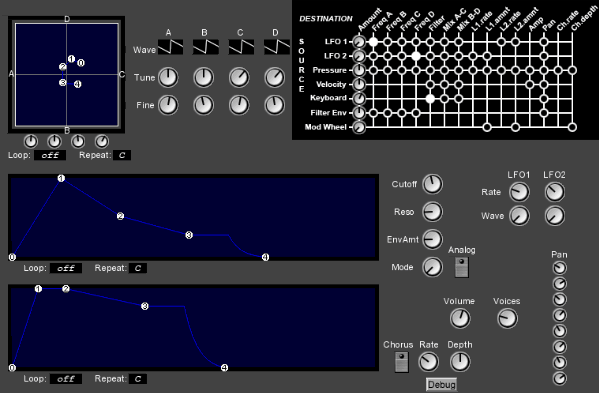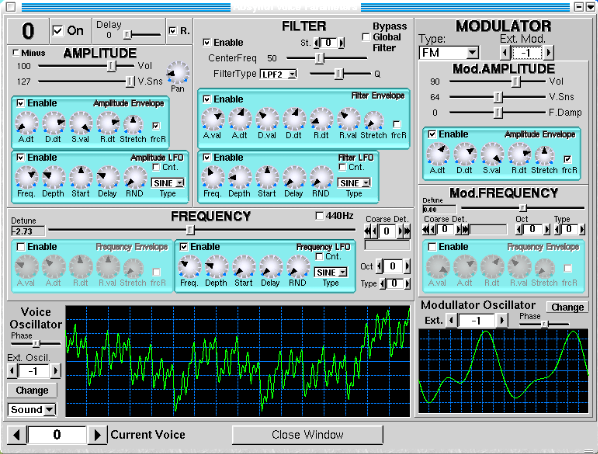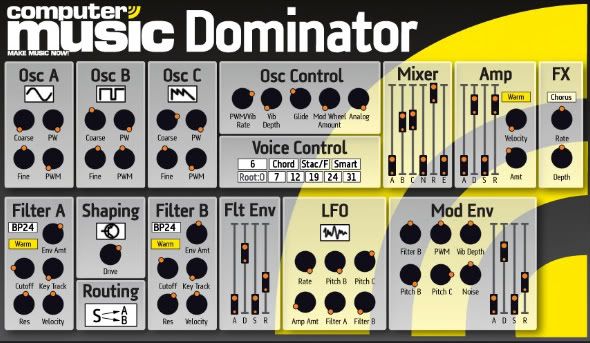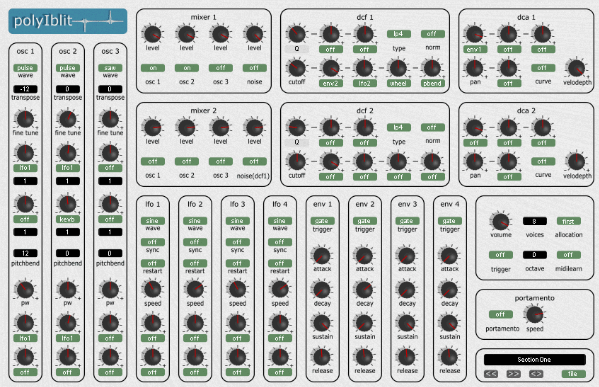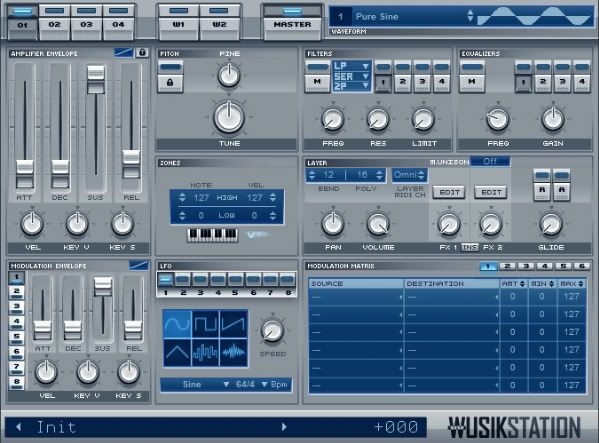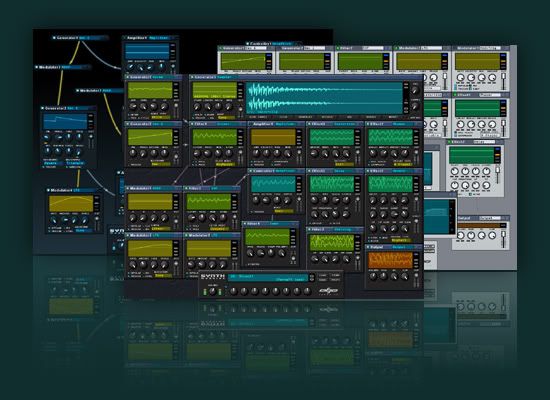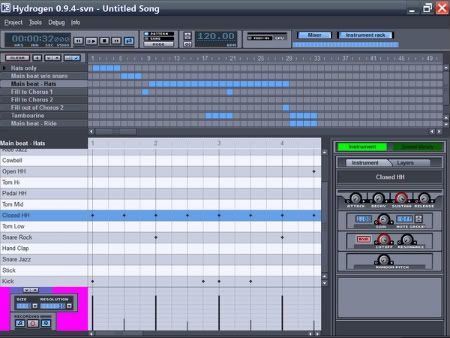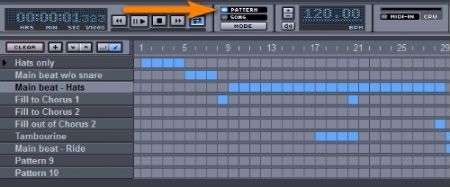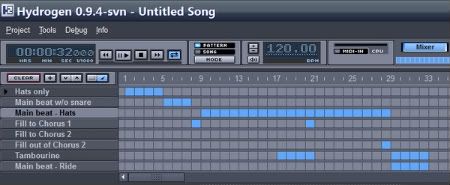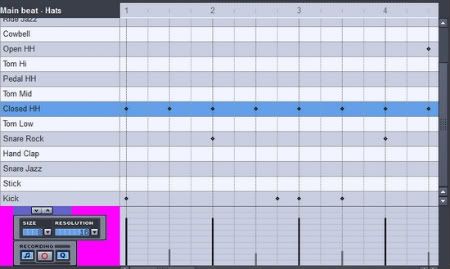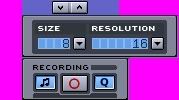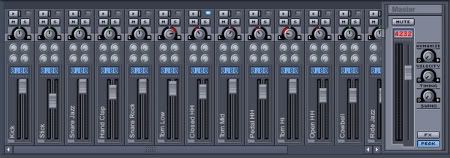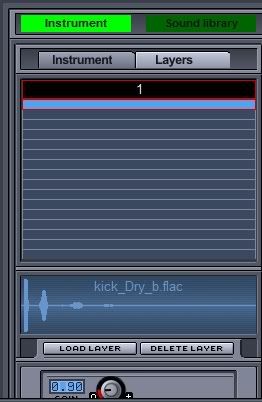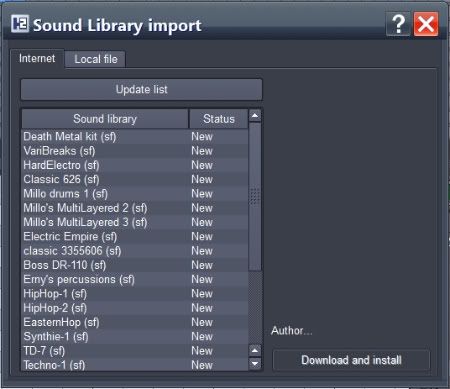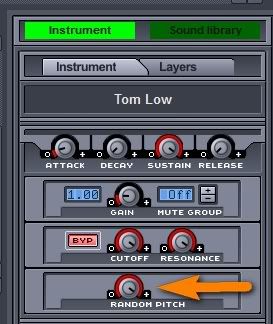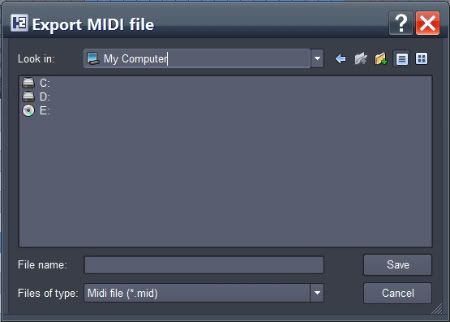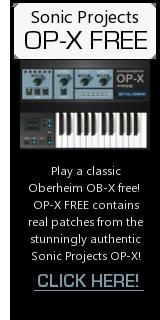New Free Sound Library - Prodyon Virtual Gear Phenome!
As you may already know I am a sucker for free sound libraries. Maybe it's because I'm (unfortunately!) old enough to remember just how difficult and/or expensive it was to find a single product that covered all the bases needed for songwriting. For many years, synth owners had to own several synthesizers/keyboards to get a broad palette of sounds they needed for songwriting. It was not uncommon to have a Fender Rhodes for meat and potatoes electric piano, an ARP Solina, Crumar Performer or something similar for strings, and a variety of other synths, commonly Oberheim OB's, ARP Odysseys, Moog Minimoogs, Sequential Circuits Prophets and Roland Juno's; each contributing their unique sonic signatures to broaden the overall variety of available sounds.
Later, as the digital age of the mid-to-late 80's dominated the market, manufacturers started selling products that included a vast variety of sounds because of much-increased patch management capabilities, paving the way for a new generation of keyboardists who would own only one synth (and possibly a drum machine) and write entire demos or even commercial albums that way. Often times add-on tapes, cartridges or disks were sold as additional sound libraries to expand the already vastly improved selection of sounds available on a stock keyboard.
Now that we have our feet firmly planted in the home computer-based studio age, obtaining sound libraries largely comes down to the amount of hard drive space you have and how much money you will spend. Fortunately for us, there are software companies like Prodyon Virtual Gear who are making sound libraries available for either free or for a very small investment.
An increasingly popular model has been to release the core software for free and include a base of sounds to get you going. That way the company can monetize by releasing add-on libraries or sound packs to be played in their software for a reasonable charge. This is a fantastic strategy in my opinion, and it's one that is becoming popular not only in music production but in the larger software world as well. Some examples of music software like this are the Native Instruments Kontakt Player and Kore Player, the UVI Workstation, Yellow Tools Independence FREE and the newly re-released IK Multimedia SampleTank. Now we can add Prodyon Phenome to the ever-growing list!
The Prodyon Phenome consists of an extremely full-featured soundfont player that can load any soundfont you already have or that you may find. Phenome has support for 8 separate patches in one instance (8-part multi-timbral). This is a cool way to save on CPU because you only need to load one instance of Phenome to use up to 8 different patches, or better yet, to get wildly creative by blending up to 8 different sounds together to create 1 completely unique patch.
Another area that Phenome excels is in its depth of control. It actually functions much like a full-featured soft synth more than most soundfont players that we see - at any price. Editing functions include ADSR envelopes to control the amplitude of the sound as well as the character of the filter, which has a 4-stage envelope, cutoff and resonance, and even more rare filter functions like lo-fi, drive and more! There is also a separate 5-stage pitch envelope which adds a Hold function to the common ADSR-style scheme. Other features include an arpeggiator, an effects section comprising of a nice reverb and a fully-featured chorus, and mod wheel assignments for controlling various modulation parameters.
All these features are definitely impressive for a free soundfont player, but features are meaningless if the libraries are not done well. So how does the included free library sound? I want to say "surprisingly good considering that it's free" but the truth is that it sounds surprisingly good - period! The developer definitely knows how to program interesting patches, and the free bank is chock full of sounds full of life, character and movement. This is not a typical "synth classics" library. He has taken the time to give the patches a uniqueness that many users will undoubtedly appreciate.
Also available is a Factory B bank including 171 presets using 106 soundfonts as their basis ($19.99) and a new Ambient Textures soundset featuring 128 presets/soundfonts at a very reasonable $24.99. More diverse soundbanks will be offered in the upcoming months and should maintain the low pricing model of the first two banks.
I was so impressed with the scope and quality of Prodyon Virtual Gear's Phenome that I contacted the developer, Dennis Lenz. Dennis kindly answered a number of my questions:
So what does Prodyon mean?
"To be honest - it´s only a self creation with no particular meaning. When i was looking for a "company" name, i wanted to have something with "Pro" = professional in it and all the sudden i came up with this :-)"
Your sounds are very high-quality and interesting to listen to. Have you done sound design in the past? Where did you learn your skill?
"Thank you! I´ve done a bit of sound design in the past but primarily only for myself and for the fun of it. I always wanted to know how this and that sound can be achieved, how to create beautiful multisamples and stuff like that. So i started by studying other people´s soundset to "see and learn". I also often looked at different Synthesizer Settings to see how a certain sound can be achieved. That´s basically everything!"
What kinds of music do you primarily enjoy listening to?
"To just about everything that has something special or "driving" in it! I love tracks that have powerful melodies and that "certain sound". Most of the time i enjoy commercial music. The only thing where i complain is that there´s simply too much good music out there. That makes it hard to choose :-)"
Do you make music yourself? If so, do you have a way for our readers to hear it?
"Yes, i have done several tracks in the past. There were also some releases, mostly Dance-type music.
For example there´s a track of mine in YouTube called "Der blaue Planet" which is a cover track of the old "Der Blaue Planet" from Karat. Some may know this. I think ..."
Where are you from?
"From good old Berlin - Germany! :-)"
How has the response to Phenome been so far?
"Overwhelming! I got nearly 10.000 Downloads so far. For me, Phenome is the biggest success for Prodyon ever. And that shows me that there´s still a huge demand for Soundfont players, which is great. As is already said - Soundfont´s aren´t dead!"
Do you make music software full-time? If not, is that your plan?
"Currently i do it 24 / 7, yes! I´m enjoying it very much - it´s great to see and hear that you make people happy with your own custom creations. Besides Prodyon i also plan to release more and more music in the future. I´m still dreaming of having my own Album ;-) But that takes time!"
Where can people go if they need help using Phenome or just want to talk to other users for creative reasons, such as sharing presets or even whole songs?
"They can visit my own section at the worldwide KvR-Audio Forum! There´s also a direct link on my website. As an alternative people can always e-mail me at any time. I`m happy to answer all questions!"
Have you considered having a songwriting contest where artists use Phenome as the primary instrument?
"That´s an excellent idae - i might think about this!"
You have released 3 excellent sound libraries (including the factory library) in a relatively short amount of time. Do you have any others planned or already in production?
"Yes, of course! Planned are (for now) the new Factory "C" and "D" expansions, which add around 300 more presets to Phenome. This time, there will more electronic stuff, like more synthesizer leads, basses and arpeggios. I also have plans for some acoustic libraries with Guitars, Pianos and the like. So, let´s see! :-)"
Do you have a clear vision for future pricing for Phenome libraries or are you trying to see how things go first?
"Since it´s not that easy today to have a somewhat steady income i have to see first, yes. Prices might be higher in the future but also lowered. Time will tell!"
Lastly, do you have any advice or tricks for users on how to get interesting things out of Phenome?
"I can only suggest playing with the "Note Off"- feature that every layer incorporates! You can do really interesting sounds by for example playing a short sound on Layer 1 and have Layer 2 play a "Note-Off" Pad sound with a long attack. This gives the illusion of the sound on Layer 2 being played reverse!"
To hear Prodyon Virtual Gear's free Phenome for yourself you can preview and download the free bank here: http://www.prodyon-virtual-gear.com/crbst_8.html
The Phenome player required to use that bank as well as all other Phenome add-ons can be found here: http://www.prodyon-virtual-gear.com/crbst_7.html
If you decide to download and use the free library only, please consider donating a small amount to the developer to show your appreciation and to cover the bandwidth costs of the enormous download size of the soundfonts. And yes, Dennis, soundfonts are definitely not dead! :-)

